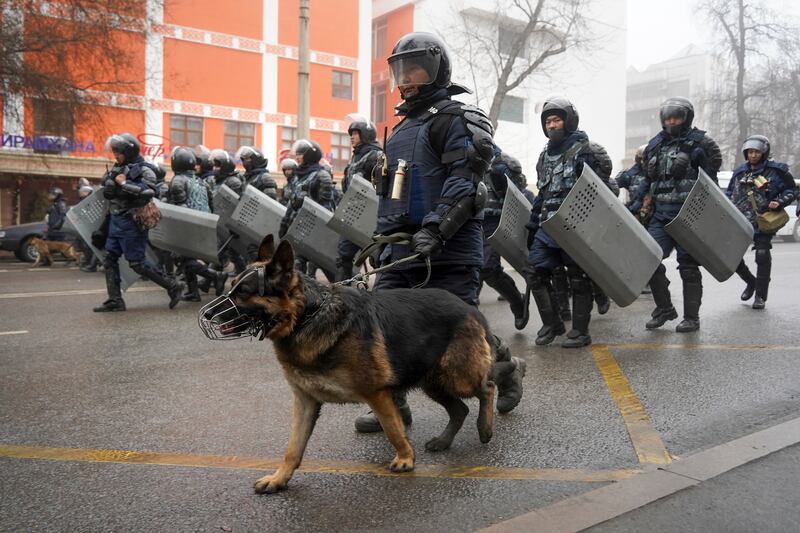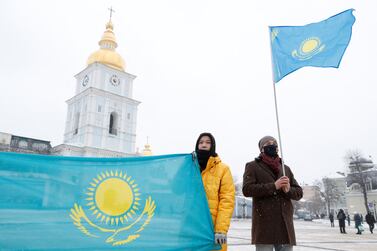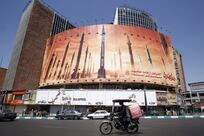The recent violent unrest in Kazakhstan, during which 164 people were killed and thousands have been detained, has brought unwelcome attention to a country that may be the size of western Europe but which normally attracts few headlines. President Kassym-Jomart Tokayev’s command for security forces to “shoot to kill without warning” and the appearance of soldiers from the Russian-led Collective Security Treaty Organisation that he requested to restore order have led some people to assume this is familiar: another instance of an authoritarian leader of a former Soviet republic struggling to deal with popular opposition to his rule.
The reality may be very different and much more complicated. There may quite possibly have been “an attempted coup d’etat” as Mr Tokayev, who some believe to be a real reformist, put it on Monday. Either way, any genuine popular discontent may also be aimed far more at Mr Tokayev’s predecessor, Nursultan Nazarbayev, the “First President”, as Kazakhstani state-aligned media call him, who led the country from 1990-2019 and who for good or ill is most responsible for the state it is in today.
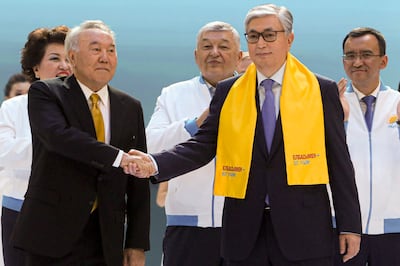
Mr Nazarbayev made much over the years of how he was following the model of Singapore and Malaysia – multiracial countries that nevertheless built stable democracies, stressing order and harmony and making huge economic progress. Mr Nazarbayev first asked Singapore’s founding father Lee Kuan Yew and long-time prime minister for advice in 1993, and in his 2007 book, The Kazakhstan Way, he wrote that Mr Lee was one of his two role models.
Ahead of the 30th anniversary of Kazakhstan’s independence on 16 December last year, Astana Times published a lengthy essay praising Mr Nazarbayev’s nation-building and the dominant role of his Nur Otan party. It said that politicians had been willing “to unite for the sake of further progressive transformations of the country laid out on the contours of a multiparty model with a dominant political force based on the experience of the so-called Asian Tiger states, such as Singapore… Malaysia, etc.”
But there are very big differences between the courses broadly followed in Singapore and Malaysia and that advanced by Mr Nazarbayev.

Kazakhstan government resigns as protests rage over fuel prices
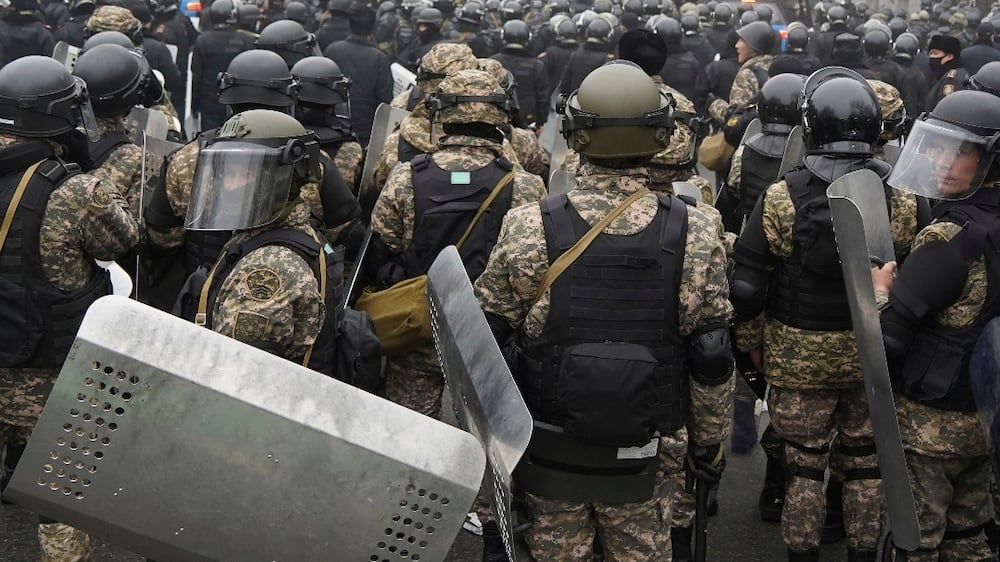
First of all, while Singapore and Malaysia were dominated by strong leaders in Mr Lee and Dr Mahathir Mohamad for decades, neither man encouraged the kind of cult of personality that is synonymous with Mr Nazarbayev. When first prime minister (1981-2003) Dr Mahathir refused to allow any buildings to be named after him, while Mr Lee stated that he wanted his house to be demolished after his death as he did not want it to become a shrine to his memory (the fact that it still stands has led to a family feud).
In Kazakhstan, however, December 1st is a national holiday in honour of the “First President”. Mr Nazarbayev’s life has been celebrated in film, theatre, music, art and most famously, statues; while the capital he built, Astana, was renamed Nur-Sultan after him just three days after he stepped down from office, and he still officially remains “Elbasy” or leader of the nation.
Secondly, leaders in Singapore and Malaysia are accountable and have to win fiercely fought elections. In both countries leading ministers have lost their seats, and in 2018 Malaysia’s “dominant political force”, the Barisan Nasional, found itself out of government. Singapore’s ruling PAP has never lost at the polls, but when it secured “only” 60 per cent in the 2011 general election it led to very searching questions and an urgent realisation that the party needed to connect more closely with the electorate.
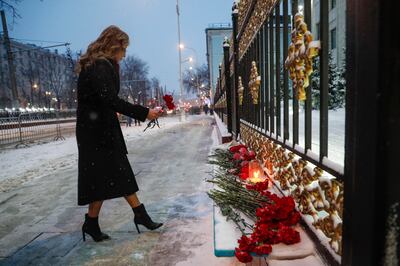
Mr Nazarbayev won his last presidential election in 2015, on the other hand, with 98 per cent of the vote. Far from all of his record is bad, and he may have enjoyed significant support, but let’s just say that 98 per cent is a surprisingly high figure.
Thirdly, Singapore and Malaysia have both prepared cadres of capable and experienced younger leaders; successions have been planned (exhaustively, in the case of Singapore); and transitions have been smooth. Recent events have shown this is not the case in Kazakhstan, not least as Mr Nazarbayev stayed on as chairman of his Nur Otan party until last November and as chairman of the powerful national Security Council until he was removed by Mr Tokayev on January 5th.
To be fair to Mr Nazarbayev, there were many achievements under his rule. In a 2019 report the London think tank Chatham House labelled Kazakhstan “an upper middle income” state, “one of the most successful economies in the region and… among the best-performing of the post-Soviet resource exporters.”
He did institute significant economic reforms, it continued, but added that “political reforms conspicuously lagged during his presidency – with Mr Nazarbayev choosing not to establish an independent judiciary, a parliament with meaningful oversight powers, or even a constitution that is respected by the authorities themselves.” This is not even to mention the allegations of civil liberties and the documented killing of demonstrators by state police in what became known as the Zhanaozen massacre in 2011.
By contrast the freedoms, the protections under the law, and the ability to raise – if not always effectively redress – perceived wrongs enjoyed by Malaysians and Singaporeans are immense.
Neither Singapore nor Malaysia are western-style liberal democracies (I mean no criticism by that), and the idea has often been raised that their populations were willing to live under a less freewheeling political climate than in the west in exchange for the state ensuring rapid economic growth that benefitted all. If so, to a great extent their governments have delivered.
Singapore has some of the best social provision and one of the highest gross domestic product per capita in the world. Inequality is still high in Malaysia, but there have been countless programmes, from the land development provided to rural workers in the '60s and '70s to the 1Malaysia clinics established in 2010 which provided services for RM1, that have demonstrated that governments have been trying to reach out to all citizens.
In Kazakhstan, however, this “bargain” has not been kept. The wealth gap as grown, with some elites becoming among the super-wealthy, while the reality for many, as University of Toronto professor Edward Schatz recently put it, has been that “the gap between the promise of becoming middle class and the reality of living with barely enough became harder to bear over the past decade.”
Mr Tokayev may be harvesting the discontent sowed by the failure of the seeds planted by his predecessor, Mr Nazarbayev. But the problem is not that the “First President” followed the models of Singapore and Malaysia. It is that he did not follow them properly across the board. If his hero Lee Kuan Yew was still alive, he would tell him so in typically robust language.
